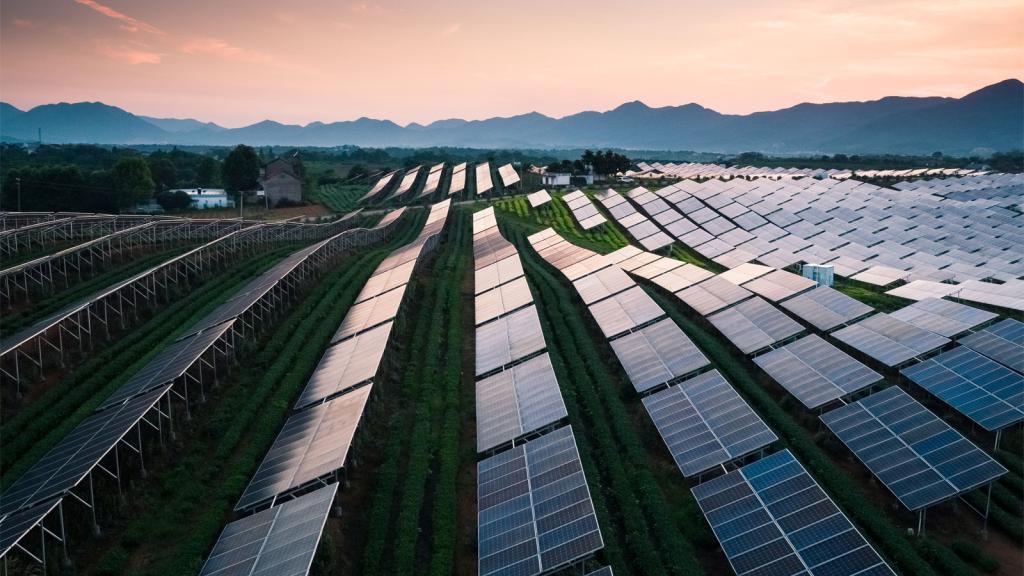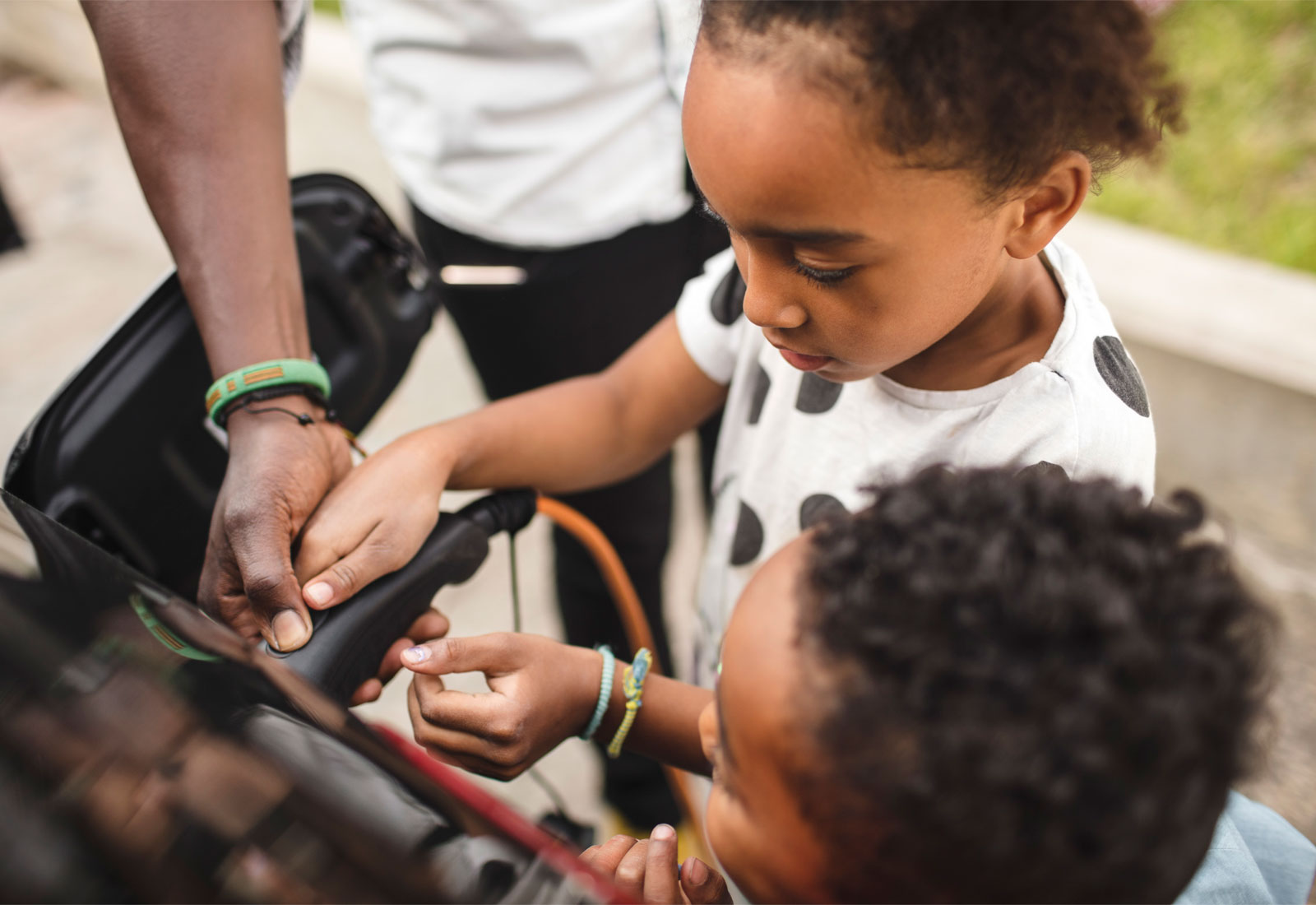Automobiles and automakers have a storied place in American history: Vehicles have played a huge part in making every aspect of our lives easier, from alleviating transportation woes to building the supply chains businesses rely on today.
But the climate crisis is shifting both industry and consumer needs. The electric vehicle (EV) revolution has been exemplified by Tesla, which has become a high-end household name. They’re currently the only U.S. automaker producing EV’s on a large scale, and they remain financially out of reach for many: Tesla’s range of vehicles runs from about $40,000 to $119,000.
Yet there is an urgent need to make clean transportation equitable and widely accessible. Transportation is the number one source of carbon emissions in the U.S., which is why Dream Corps’ Green For All, a national non-profit program, has made it a key pillar of its advocacy. Green For All works to bring unlikely allies together to advance green energy solutions, such as reducing pollution with an eye toward equity. Their current campaign focuses on how combating inequality is crucial to effective climate solutions.
The impact of transportation is something that Congresswoman Rashida Tlaib – whose Michigan zip code is among the country’s most polluted – knows firsthand. Her district, a majority Black neighborhood, has a large Marathon Oil refinery with a long history of releasing toxic petroleum byproducts, as well as air pollution from highways and trucking traffic.
Like many others fighting for clean energy access and equity, Tlaib is a fervent supporter of the imperiled Build Back Better plan, which includes funding to expand charging infrastructure. “I grew up in Southwest Detroit, where I thought the smell [and pollution] was normal,” she says. “So many of our neighbors were getting respiratory issues, asthma, and cancer. We put the world on wheels, and know that transportation accounts for large portions of fossil fuels we burn, that is also polluting our air.”
Air pollution tends to concentrate around ports, freeways, and distribution centers, which are often sited in low-income areas. Stan Cross, electric transportation policy director at the Southern Alliance for Clean Energy, says, “Diesel emissions are a leading cause of air pollution-related diseases that impact low-income communities of color first and worst.”
Unlike gasoline-powered cars, electric vehicles don’t emit any harmful fumes and can be powered by renewable energy resources (although the US electric grid still hasn’t fully transitioned to renewable sources). Tlaib is pushing for an expansion of EV tax credits, increasing the credits from $7,500 to $12,500 via the Build Back Better plan, which would help make EVs more affordable, and strengthen American manufacturing through its union-friendly provisions.
Historically, tax credits have not always addressed equity concerns, often benefitting higher-income households most. To ensure that low-income and people of color—many of whom have been disproportionately impacted by pollution and climate change—can access electric vehicles, other state programs and policies need to be tailored toward these communities. One example is California’s Clean Cars for All, which offers grants specifically for lower-income consumers.
Cross says much more needs to be done to make EVs more widely available. Charging stations are typically built in wealthier and majority white neighborhoods, leaving behind rural ones. And despite EVs’ benefits, government investment in affordable, accessible public transportation will still be needed to meet everyone’s mobility needs.
But change is coming. “The business case for electrifying medium and heavy-duty vehicles is strong: There is a lot of money to be saved,” Cross says. Cross explains states like Georgia, North Carolina, South Carolina, and Tennessee have invested $11.9 billion in electric vehicle manufacturing in the last six months. The goal is to bring supply chain investments in the region to $23 billion, creating 23,000 new jobs. “The Southeast imports all of the gas and diesel we use, and two-thirds of every dollar we spend on gas and diesel leaves the region to [fund] oil-rich states and countries,” Cross explains. “We can drive a lot cheaper with locally generated electricity. If every car, truck, and bus in the Southeast were electric today, the region would get a $47 billion annual boost to the economy.”
While EVs have significant economic benefits, policymakers will also need to ensure the transportation transition addresses job displacement. Securing healthy working conditions and equitable wages makes environmental justice and labor advocates natural allies, Tlaib explains. “Pushing back against those fighting the Clean Air and Clean Water Act has really been part of the root of why union jobs [are] super important—but they have to be jobs that aren’t hurting people. That means clean energy transportation, and good paying jobs to support the industry,” she explains. “It’s very much an American story that we hear over and over again: making sure our workers, and the families and communities we serve, can actually afford these vehicles.”
This history needs to inform the Biden administration’s next steps, including the recently-introduced Bipartisan Infrastructure Law. It proposes building a network of 500,000 chargers, making EV charging more accessible to all Americans. Once charging deserts are addressed, automakers will need to get on board with scaling up production, a technological challenge on par with the birth of cellphones and the Internet. “Every technological leap has received government support to make it affordable for consumers–EV’s are no different,” Cross says. “The Biden administration knows this. That’s why we see funding ramping up in Build Back Better.” Domestic industry giants are quickly jumping on board to remain competitive. Ford, for example, recently updated its electric vehicle line by expanding into the hybrid and truck market. And GM aims to sell nothing but electric vehicles by 2035.
Despite the hurdles in ensuring that these policy goals truly include everyone, Cross and Tlaib share the view that EVs are a once-in-a-century opportunity to remake transportation, create jobs, improve public health, and address the climate crisis. “The quicker we take bold action on climate, the quicker we can save lives,” Tlaib says. “It’s going to take intentional work with federal, state, and local governments to ensure that we are not further harming the Earth.”
It’s no small task. But, she says, we need “a commitment to do things differently for the good of our environment, and our people.”
Dream Corps Green for All works at the intersection of the environmental, economic, and racial justice movements to advance solutions to poverty and pollution. We advocate for strong, resilient, and healthy neighborhoods through policy work and empathy-based storytelling that ensures as the clean economy grows, it brings good jobs, better health, and opportunity to historically underserved communities. Learn more by visiting www.thedreamcorps.org or follow us on Twitter @GreenForAll.




